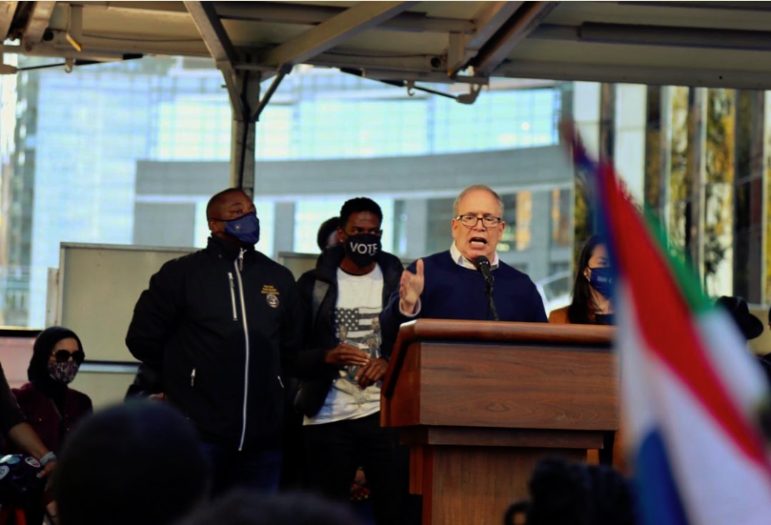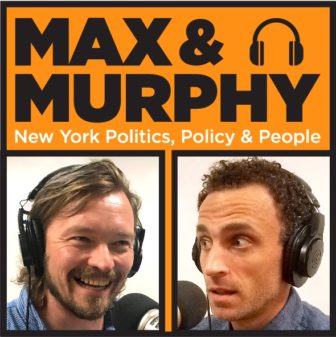The comptroller and Democratic mayoral candidate also discussed his promise for more frequent, round-the-clock transit service, his climate plan, policing and the state of the primary contest.

Office of the Comptroller
Scott Stringer speaking at a 2020 get-out-the-vote rally in October.Over his seven years in the Municipal Building, Scott Stringer has found plenty of fault with the mayor—as comptrollers typically do—and housing policy has been a frequent point of contention. Stringer exposed problems with NYCHA maintenance and poor conditions in homeless shelters, criticized the administration’s handling of families made homeless by domestic violence, hyped the housing potential of parcels of vacant land and even put out his own housing plan.
He was far from the only critic of de Blasio’s Housing New York initiative, which detractors said directed too few units to low-income and homeless families, relied too much on market-rate development, and concentrated to much on rezoning neighborhoods of color. The latter objection has helped fuel a push for comprehensive planning that the City Council has taken up and many mayoral candidates—including Stringer—have endorsed.
On Wednesday’s WBAI Max & Murphy Show, Stringer discussed where his administration would locate affordable units:
“I think throughout the city. I think there’s always a place in zoning discussions to look for appropriate places to upzone. Every neighborhood should be looked at as a place where we can build affordable housing, but real affordable housing,” he said. Pressed for specifics, he replied: “Name me a neighborhood: Upper East Side UWS. We could keep going to some of the more wealthier neighborhoods in the city. Everyone should want people of all different backgrounds living together—that’s what New York City is all about. You don’t want to segregate communities—in other words, keep building affordable housing only in poor communities or communities that have more economic challenges. Every community should be part of dealing with the housing crisis.”
Stringer also discussed his transit plan, which calls for improving bus and subway service such that a rider need wait no more than six minutes for a ride any time of day, every day.
“Oh, it’s definitely possible,” he says of that level of service. “That comes in a number of different ways. We have to build out our subway and bus infrastructure. We do have to rely on money to do this—you can’t just make promises you can’t keep. I am optimistic that the federal government is going to put more money into publics transit and green infrastructure and New York City as a whole but I do think we’re going to see more investment in New York City as a whole.”
His plan hinges on flipping the way state gas tax revenues are used, from the current breakdown that favors highway maintenance to an allocation emphasizing mass transit—a shift Stringer says could generate $400 million a year for the city.
His transportation plan also calls for constructing 350 miles of bike lanes over five years and “rationalizing parking.” Asked to elaborate on how to do that, Stringer did not offer much detail, but described a broader vision.
“As we think about less parking and less cars, first we have to massively expand busways and bus lanes and bus shelters. People talk about whether the city should take over the subway system I just don’t think economically it’s feasible and talking about it only keeps us away from what we can do,” he said.
“As mayor I want to be the street mayor and the bus mayor.”
Listen below to the conversation, which also covered climate, food and policing policy, whom his campaign donations are coming from, what to make of Andrew Cuomo versus Ron Kim, and the state of the race for mayor.










One thought on “Scott Stringer: Every Community Must Help With NYC Housing Crisis”
The surest way to destroy a nice safe neighborhood is to bring thousands of poor people into it. This us just what happened to NYC in the 1950s through the 1970s. The poor brought violent crime and anti-social behavior with them. Bring thousands of poor into a wealthy neighborhood and watch robberies and burglaries increase.